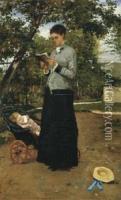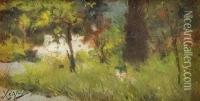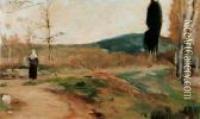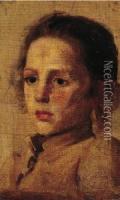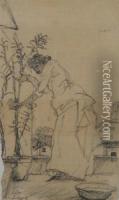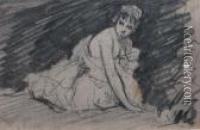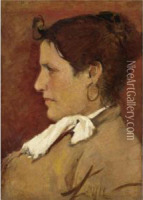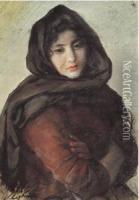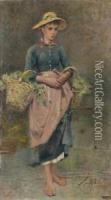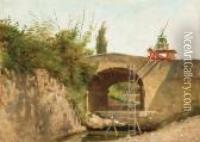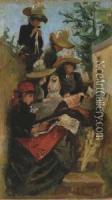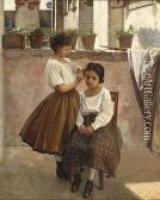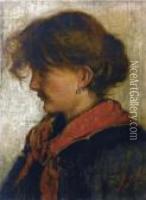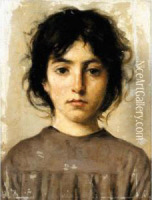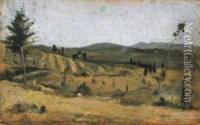Silvestro Lega Paintings
Silvestro Lega was an Italian painter, one of the key figures in the Macchiaioli movement, which was the Italian equivalent of the French Impressionists. Born on December 8, 1826, in Modigliana, Italy, Lega developed an interest in art at an early age. In 1843, he enrolled at the Florentine Academy of Fine Arts (Accademia di Belle Arti di Firenze), where he studied under the neoclassical artist Giuseppe Bezzuoli and the Romantic painter Antonio Ciseri.
During the early years of his career, Lega was influenced by his involvement in the Risorgimento, the movement for Italian unification. This period of political turmoil and cultural renaissance significantly impacted his subject matter and artistic style. After participating in the Second Italian War of Independence as a volunteer, he moved to Piagentina to continue his painting. There, he met the poet Giovanni Costa, who played a pivotal role in Lega's life, introducing him to the Macchiaioli group. The Macchiaioli, based in Tuscany, aimed to paint real life and nature as they observed it, using patches of color (macchie) and giving attention to light and shadow.
Lega's work with the Macchiaioli from the late 1850s onward marked the most fruitful period of his career. His paintings from this time exhibit a focus on ordinary people, daily life, and the landscape of Tuscany. He became known for his realistic portrayal of the Italian countryside and his insightful representation of the social issues of his time. One of his most notable works from this period is 'Il Pergolato' (1867), which showcases his skill in capturing light and his empathetic approach to depicting rural life.
In the 1870s, Silvestro Lega's style evolved as he began to employ a more intimate, refined approach to his subjects, often reflecting a sense of melancholy or introspection. This shift in style can be seen in works like 'La Visita' (The Visit), where the focus is on the emotional state of the subjects rather than the landscape. Unfortunately, the latter part of Lega's life was marked by personal tragedies and a decline in his artistic production. His work fell out of favor, and he faced financial difficulties.
Silvestro Lega died on September 21, 1895, in Florence. Despite the relative obscurity he faced at the end of his life, his work was later reassessed, and he is now celebrated as a significant figure in the history of Italian painting. His contributions to the Macchiaioli movement have been recognized for their innovative approach to capturing light and for pioneering a distinctly Italian brand of impressionistic painting.
